Every day thousands of people across the country deal with unexpected plumbing disasters. Toilets overflow, pipes burst and garbage disposals give out. Because of this, every day local plumbers are answering these calls. They’re showing up, day or night, to help get your home or commercial property back in working order, because as we all Read more
Guest Blog

Every day thousands of people across the country deal with unexpected plumbing disasters. Toilets overflow, pipes burst and garbage disposals give out. Because of this, every day local plumbers are answering these calls. They’re showing up, day or night, to help get your home or commercial property back in working order, because as we all know, water emergencies don’t wait for office hours and they don’t respect weekend schedules.
Who exactly are these local heroes answering the calls? In many cases, they’re a small business owner and local franchisee operating under a nationally respected brand.
As America celebrated National Small Business Week, April 30 – May 4, it is the perfect time to spotlight the local plumber franchisees who tackle our dirty jobs.

But aren’t all franchises run by big corporations? They don’t care about our small community. Wrong! One of the most common misconceptions about a franchise brand is that each location is just another dot on a map. In reality, the local franchisee that’s answering your call and getting your bathroom back in working order on a Saturday is more than likely a member of your community. Just because they’re operating under a larger company name doesn’t make them any less of a small business owner than if they had started it all from the ground up.
The reality is that franchises are a network of small business owners that come together to champion the same brand. And together, they make a huge impact.
In fact, small businesses make up the majority of plumbing services in the U.S. Local franchisees, like ours at bluefrog Plumbing + Drain, are part of the nearly 90% of American businesses that employ fewer than 20 workers.
Individually they may seem small, but these so-called small businesses are a mighty force, celebrated each year by the U.S. Small Business Association during National Small Business Week.
As they continue to answer the call to handle “dirty jobs,” a plumbing franchise has staying power in the small-business realm. Able to weather recessions, plumbing has proven to be a need. No matter the economic conditions, plumbing services are always in demand.
As U.S. homeowners face more pressing water-related issues, including environmental impacts like water quality, professional plumbers are ready to jump in and get their hands dirty. Be it leaky faucets, running and/or overflowing toilets or tree root removal, no job is too large or small, or too dirty, for a local plumber.
So, as we celebrate National Small Business Week, I urge everyone to see the bigger picture and appreciate the local heroes that show up each day to answer our plumbing disaster calls. It’s a dirty job, but somebody’s got to do it. And we’re glad to be that solution.
Gary Findley is the CEO of bluefrog Plumbing + Drain headquartered in Waco, Texas.
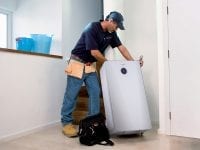
Tankless water heaters can provide a virtually constant, uniform hot water temperature on demand, unlike their traditional, storage tank-based counterparts. Consumers can typically save up to 40 percent in annual energy costs versus tank-type water heaters. To enjoy the full benefits of tankless water heaters, the system must receive routine maintenance, as it’s a key Read more
Tankless water heaters can provide a virtually constant, uniform hot water temperature on demand, unlike their traditional, storage tank-based counterparts. Consumers can typically save up to 40 percent in annual energy costs versus tank-type water heaters. To enjoy the full benefits of tankless water heaters, the system must receive routine maintenance, as it’s a key component for a long service life and high performance.
Maintenance Service Checks
By conducting proper recommended maintenance, tankless units are expected to last far longer than tank-type units. While a conventional water heater typically requires replacement every seven to 10 years, the tankless model could last up to 20 years with recommended annual maintenance. Before servicing any tankless water heater unit, always shut off the electrical power supply, manual gas valve and water valves. Annual maintenance includes inspecting the venting system, combustion chamber, burner, pressure relief, water filter and condensate trap. Maintenance also includes descaling the heat exchanger yearly and cleaning the fin coils of the heat exchanger bi-annually (every two years). Examine the water heater and its components for wear or fatigue and immediately repair all faults to avoid damage to the system.
 Know the Water Quality
Know the Water Quality
Water quality can have an impact on appliance longevity and may void the manufacturer’s warranty, as well. For water analysis data call your local water department, or if on a well, have well water analyzed periodically. If the tankless water heater is operating in applications where the outlet temperature exceeds 140°F, a water softening system is strongly recommended. The higher the set temperature is on the appliance, the greater the risk for scale/mineral deposits.
Minimize Scale Buildup
In areas where the water supply has a high mineral content, the heat exchanger should be flushed with a descaling solution. Scale buildup will shorten the life of the water heater and damage resulting from scale may not be covered under the manufacturer’s warranty. A water softener is required if the water hardness exceeds 6 grains/gal (180 mg/l) calcium carbonate. In the Bosch Greentherm 9000 series, the unit’s lifespan is aided by a primary copper heat exchanger and a secondary stainless steel heat exchanger to minimize scale buildup.
Winterize Your Unit
In addition to routine maintenance, tankless water heaters should also be winterized for seasonal use. If the unit must be installed in a location where it may be exposed to freezing temperatures, all the water needs to be drained from the heater. For full details on maintenance and winterizing tankless water heaters, always consult the manufacturer’s installation and maintenance instructions.
Like check-ups at the doctor and car inspections at the auto shop, routine maintenance on tankless water heaters helps address any repair issues early and ultimately extends the life of the unit.
Craig Porter, Bosch Thermotechnology
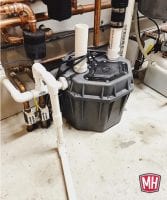
We do a lot of heating systems for second homes or lake cabins in remote areas. These houses have septic systems and minimum use all winter so having high efficiency condensing appliances introducing a trickle of flue gas condensate down the drain all winter can be a huge problem with dormant septic tanks and exterior Read more
 We do a lot of heating systems for second homes or lake cabins in remote areas. These houses have septic systems and minimum use all winter so having high efficiency condensing appliances introducing a trickle of flue gas condensate down the drain all winter can be a huge problem with dormant septic tanks and exterior main drain lines.
We do a lot of heating systems for second homes or lake cabins in remote areas. These houses have septic systems and minimum use all winter so having high efficiency condensing appliances introducing a trickle of flue gas condensate down the drain all winter can be a huge problem with dormant septic tanks and exterior main drain lines.
Typically we would run the gas boiler condensate drain directly to the floor drain and call it a day. In situations like this though that will almost always cause freezing at the septic tank inlet or in the main line from the house. This is due to the lack of use which isn’t introducing more bacteria, which would create heat.
 A few years ago I started installing the Liberty 404 sump station to combat this issue. This sump would typically be used to add a sink where immediate plumbing access isn’t available. We use it because it allows the system to run as normal but instead of a trickle down the drain all day, the sump fills with a couple gallons and discharges all at once so there’s no possibility of freezing in the tank or line. Simply using a condensate pump is not enough to stop the freezing in this situation, the larger volume from the sump is needed.
A few years ago I started installing the Liberty 404 sump station to combat this issue. This sump would typically be used to add a sink where immediate plumbing access isn’t available. We use it because it allows the system to run as normal but instead of a trickle down the drain all day, the sump fills with a couple gallons and discharges all at once so there’s no possibility of freezing in the tank or line. Simply using a condensate pump is not enough to stop the freezing in this situation, the larger volume from the sump is needed.
 I also pipe an overflow to the floor drain in case the pump fails when no one is around. Hope this helps and thank you for taking the time to read. If you’ve got questions or comments please add them below!
I also pipe an overflow to the floor drain in case the pump fails when no one is around. Hope this helps and thank you for taking the time to read. If you’ve got questions or comments please add them below!
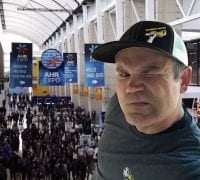
2018 is well underway and with a couple huge trade shows already in the rear view I find myself finalizing this week’s job schedule and plans to leave town for yet another industry event. Between personal conversations, social media message and emails throughout the year I am asked variations of the same question over and Read more
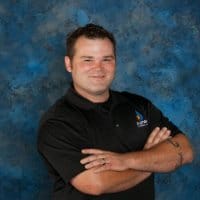 2018 is well underway and with a couple huge trade shows already in the rear view I find myself finalizing this week’s job schedule and plans to leave town for yet another industry event. Between personal conversations, social media message and emails throughout the year I am asked variations of the same question over and over; “I can’t afford to take too much time away from the truck, what trade show would be best for me?”
2018 is well underway and with a couple huge trade shows already in the rear view I find myself finalizing this week’s job schedule and plans to leave town for yet another industry event. Between personal conversations, social media message and emails throughout the year I am asked variations of the same question over and over; “I can’t afford to take too much time away from the truck, what trade show would be best for me?”
While we here at mechanical-hub.com try to show as many highlights from the various shows we attend I know it’s not enough but it helps. If you’d like to see our coverage from past shows check out our YouTube channel.
What I hope to accomplish with this post is to give a brief description of all the trade shows, event and gatherings normally scheduled throughout the year. Hopefully this helps someone who is trying to find the best event for their time and money.
Disclaimer: My list only includes events I have personally attended. I know there are even more out there and I invite anyone to share those events in the comments below.
Building Industry focused:
NAHB International Builder’s Show
This is the premier trade fair showcasing hundreds of major manufacturers representing every aspect of the residential and light commercial building industry. This three-day show is the largest trade show I have attended in the US. There are education opportunities, hands-on demos of tools, products and more. Whether its software for running your jobsite/service business or every type of flooring, tile, tools, windows or plumbing fixture etc you will find it at IBS.
This show happens each year in either January or February, next year’s show is in Vegas. Check into it now if you’re interested. I honestly think this is the place to be to see the latest trends in the plumbing industry. The products we are rough-ing in come May or June were on exhibit months before at IBS.
HVAC/Hydronics
AHR Expo
It really doesn’t get any bigger than AHR Expo when you’re talking anything hvac, hydronics or mechanical. With educational opportunities available thru ASHRAE & dozens of manufacturers throughout the industry and literally thousands of industry representatives showcasing products I have never seen so many boilers, chillers, furnaces, ducts, piping systems etc anywhere else in North America.
This show also happens annually, usually at the end of January and travels to different cities each year. In 2018 AHR was in the Windy City but next year it lands in Atlanta for the first time. If you’re in the hvac construction or service industry in any way this is a solid investment of your time and energy. And like any large trade show you’ll only get out of it what you put into it. I’d suggest downloading their mobile app and making a plan each day to visit exactly who you are most interested in; you’ll be distracted easily along the way with new products and companies so having a plan is key to making the most of your time.
Eastern Energy Expo
This regional event is packed with technical training for plumbing and heating pros students and business managers & owners. Although the majority in attendance may be from the Northeast, people do travel from far and wide because of the reputation this event has built on quality education classes and a quality trade show floor. Its not a huge show but there’s a ton of action at hand. Don’t pass on the many opportunities at hand for fun and fundraising either; whether golf, bike riding or motorcycling is your thing you can get in on a charity event to help others.
The EEE takes place annually, this year it returns to Foxwoods Resort Casino, CT. May 20-23.
Plumbing & HVAC
PHCC CONNECT
If you’re already a PHCC member, then you know all about the annual CONNECT event that brings plumbing & heating contractors from across the U.S. for training, the annual national apprentice contest and trade show. If you are not aware of what is offered at this event then click the link above.
The trade show portion of this event is relatively small but larger than local PHCC shows; you’ll see smaller tabletop type booths but representatives from major manufacturers are there so business can be done. As mentioned already this is the event of the year for plumbing and hvac apprentices. The apprentice competition is awesome and we are very proud to sponsor a contestant each year.
Uponor Convention
Uponor’s bi-annual gathering of industry manufacturers, trainers and contractors is a can’t miss if you’re company is using their PEX-a tubing and products. I have attended twice already and always look forward to the breakout training sessions, small trade show displays and fellowship this event brings each session. There is a significant registration fee but that covers your room at the Bellagio Las Vegas, meals and entertainment.
ASPE Convention & Expo
Direct from their website: “The American Society of Plumbing Engineers (ASPE) Convention & Expo is dedicated to quality education, connections and experiences for those skilled in the design, specification and inspection of plumbing systems.”
We attend the bi-annual expo as members of the media, I’m not a member of ASPE personally nor is anyone at The Hub but this is a larger expo than you’ll see at PHCC CONNECT. Contractors are encouraged to attend for the expo and training available. This year’s event happens in Atlanta at the Georgia World Congress Center.
I hope this list is helpful and I know there are many events happening all over North America that have not been listed. Some I have not personally attended, some I have but I wanted to share the ones I felt are most useful for contractors in the plumbing & hvac industry.
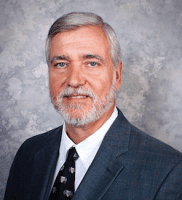
This will be the first of a 3 part EWTS update series to let attendees know what we have in store from them. You won’t want to miss the 2018 IETS program. This biennial event continues to provide critical insight into the future of our water related industries. Nowhere else is such focused attention provided Read more
This will be the first of a 3 part EWTS update series to let attendees know what we have in store from them.
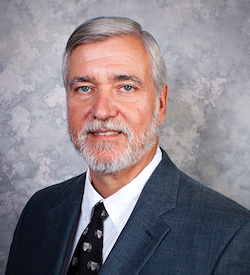 You won’t want to miss the 2018 IETS program. This biennial event continues to provide critical insight into the future of our water related industries. Nowhere else is such focused attention provided for professionals on all facets of optimizing the safe and efficient use of water. Join with your colleagues on May 15th and 16th, 2016 in Ontario, California, at this must attend event.
You won’t want to miss the 2018 IETS program. This biennial event continues to provide critical insight into the future of our water related industries. Nowhere else is such focused attention provided for professionals on all facets of optimizing the safe and efficient use of water. Join with your colleagues on May 15th and 16th, 2016 in Ontario, California, at this must attend event.
Featured topics:
Our Key Note speaker is Dr. Peter Williams, Chief Technology Officer for Big Green at IBM. Dr. Williams has played a major role in the development and delivery of IBM’s smart cities, water management and resilience solutions. He has worked with organizations as diverse as the UN and EU; many city, state and local governments; and many utilities on these issues. He co-wrote the UN’s City Disaster Resilience Scorecard, used by about 40 cities globally, and now scheduled to be used by a further 200. His key note will focus on how IT solutions, smart sensors and big data are changing what we know about consumer water use.
 Hear Professor Steven Buchberger from the University of Cincinnati and IAPMO’s Daniel Cole discuss the first statistically based update to Hunter’s Curve sine the 1940’s. This new approach to pipe sizing, which takes today’s more efficient plumbing fixtures and appliances into account, will improve the water and energy efficiency of every building that is designed using the new method. It will also reduce water residency time in premise plumbing systems, which will help to improve water quality and mitigate breakouts from opportunistic pathogens in water, all without increasing construction costs! Learn how a simple Excel based calculator will allow designers of plumbing systems to easily apply this critically important new quickly and easily.
Hear Professor Steven Buchberger from the University of Cincinnati and IAPMO’s Daniel Cole discuss the first statistically based update to Hunter’s Curve sine the 1940’s. This new approach to pipe sizing, which takes today’s more efficient plumbing fixtures and appliances into account, will improve the water and energy efficiency of every building that is designed using the new method. It will also reduce water residency time in premise plumbing systems, which will help to improve water quality and mitigate breakouts from opportunistic pathogens in water, all without increasing construction costs! Learn how a simple Excel based calculator will allow designers of plumbing systems to easily apply this critically important new quickly and easily.
Learn from Eli Goldstein, CEO at SkyCool Systems, Inc. about the new non-evaporative passive cooling technology that can be harnessed to radiate heat to the sky, and can even cool to sub-ambient temperatures under direct sunlight and how the system works to save water.
Paula Kehoe of San Francisco Public Utilities Commission will update attendees on their efforts to advance the use of non-potable water systems. The non-potable water program is an interagency collaboration with the Department of Public Health (SFDPH), Department of Building Inspection (SFDBI), and San Francisco Public Works. Hear how it has helped to establish a regulatory framework and water quality monitoring and reporting requirements for the collection and use of alternate water supplies such as rainwater, graywater, stormwater, foundation drainage, and blackwater for non-potable applications such as toilet flushing and irrigation.
Dr. Markus Lenger, Principal at Clean Blu, Inc. will be back at the EWTS to discuss the role of water reuse in smart cities. We all agree that new infrastructure is needed, but what kind? Which existing systems can be reused or re-purposed and what sensors a realistic and power efficient way of collecting data needed? Dr. Lenger will walk us through the trends, technologies, concepts and implementations around the world, their relationship to water reuse and how they change lives, improve efficiency and bring sustainability to a whole new level.
There’s so much more… Keep an eye out for the next two installments of ‘What’s on Tap at the EWTS?’ Be there!
Register at https://aspe.org/IETSRegistration
Pete DeMarco is Executive Vice President of Advocacy and Research, The IAPMO Group.
